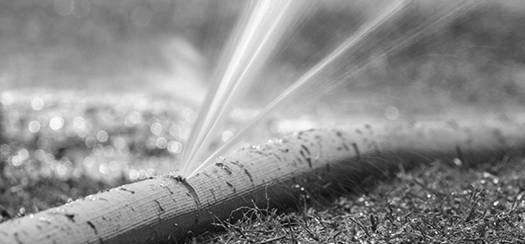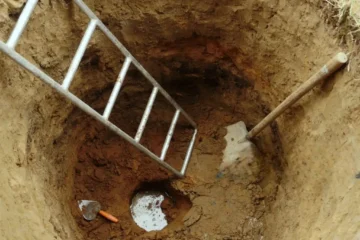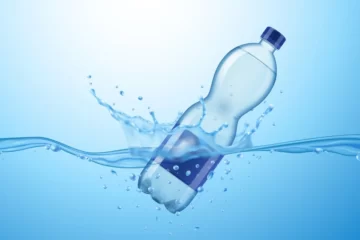When people use a hose with well water, they often wonder how long they can run it without causing damage to the well or its pump. Figuring out the best time to run it depends on a few things to think about. It’s important to use the right amount of water while making sure the well system stays in good shape.
Many homeowners who have their own wells say that running the hose for 30 minutes to 2 hours usually doesn’t hurt the system. This idea is based on the assumption that the well pumps water at a rate of 2 gallons per minute and keeps the pressure at about 50 psi.
In this article, we’ll try to find out the answer to our question, and also give you some recommendations.
How Long To Run a Hose on Your Well water?
A well pump fills your home’s water tank and adjusts its cycles based on the tank’s water level. It’s important to know how long it should run well.
Most pumps work for up to 2 hours before they need a break to cool down. Some advanced models turn off on their own to avoid overheating. Keeping the right water levels is key for the pump to work well and last long. Check your pump’s manual for info on how long it should run, how to take care of it, and how much water it can handle.
The time it runs depends on things like tank size, draw down, pump pressure, and well water volume. Good pumps can run for less than two hours before needing a 30-minute break to cool down. How long you can use a hose with well water depends on different things.
What To Do if Your Pump Runs Too High?
If you see your pump running too much or turning on and off a lot, it means any of your well water appliances are using too much water, check your water tank and the pressure settings on your pump. Figure out why the water level in the tank keeps changing. Maybe the settings on your pump got messed up and need fixing.
Also, problems like the pump losing its pressure control switch not working right could be causing the issue.
How Often Should Your Well Pump Cycle?
How often your pump turns on and off depends on how much water you use, how big your tank is, and how powerful the motor is. When there are kids at home, controlling how much water gets used can be tough, So it’s hard to regulate how often the pump cycles.
But experts recommend trying to limit how often it cycles to make it last longer and work better.
In perfect conditions, your pump should cycle every 30 seconds to 2 minutes when everything in your well water system is working well.
Why Is Your Well Pump Cycling On and Off Frequently?
Short-cycling happens when you use water faster than your pump can keep up.
For example, if you turn on all the taps or appliances in your house at once, it can cause short-cycling. Sprinkler systems are often the cause because they use a lot of water in a short time.
Why Does My Well Pump Burn When It Runs For Long?
Your well pump may be burning when it runs for a long time due to reasons such as overheating, low voltage, clogged components, worn-out motor, faulty wiring, high ambient temperatures, or using the wrong pump size.
It’s crucial to address the root cause to prevent further damage. Consulting a professional is recommended for diagnosis and repair.
What Is The Effect Of Excessive Cycling On Your Well Pump?
When a well pump starts, it creates a burst of energy that makes it heat up. If it turns on and off too often, like 300-400 times a day, it doesn’t get enough time to cool down properly. Usually, the motor gets cooled by air or liquid to stay at the right temperature when it cycles on and off.
But if the motor starts too often without enough time to cool down, it can damage not just the pump but also other parts of the well system. Things like pressure switches, starters, relays, and capacitors can be affected by the pump cycling too much.
It’s important for the motor to run for a good amount of time after starting so it has enough time to cool down.
What Are The Signs That Make Your Well Pump Bad?
- If you notice a drop in water pressure, it could mean your pump is getting worse. But it might also mean there’s a blockage in the system or the water level in the well is low. It’s important to have someone check your well system to find out what’s causing the problem.
- Another sign of trouble is if you see air in your well water lines. When you first turn on faucets after a while, you might notice them sputtering or coughing a few times.
- If you see sediment suddenly appearing in your well water, it could mean the pump isn’t working right. But remember, sediment can get into the water for different reasons.
- If your pump starts making louder noises than usual, it might produce screeching, banging, or hissing sounds.
- Frequent cycling indicates a problem with your well pump.
- A sudden rise in electricity bills suggests you should check the well pump.
Conclusion
How long you can run a hose with well water depends on factors like the pump’s ability, how much water you use, and system settings. Usually, it’s safe to run the hose for 30 minutes to 2 hours if the pump can deliver 2 gallons per minute and keeps the pressure around 50 psi.
But it’s important to watch the pump’s performance and fix any problems quickly to avoid damage. Things like the pump cycling too much, which can cause overheating and early wear, need attention to keep the well system working well.
Regular maintenance and professional checks help keep the pump and other parts in good shape.
FAQs
How long can I run a hose with well water without damaging my well or its pump?
Running a hose for 30 minutes to 2 hours generally doesn’t harm the system, assuming a well pump with a flow rate of 2 gallons per minute and maintaining a pressure of about 50 psi.
What factors determine the optimal duration for running a hose on well water?
Factors include the pump’s capacity, water usage patterns, system settings, and the overall condition of the well system.
How often should I let my well pump cycle to prevent damage?
Your pump should cycle every 30 seconds to 2 minutes under normal conditions. However, excessive cycling, typically defined as 300-400 times a day, can lead to overheating and damage to the pump and associated components.
What should I do if my pump runs too frequently or short-cycles?
Check the water tank and pressure settings on your pump. Ensure that your well water appliances are not using excessive water. If problems persist, consult a professional to inspect and repair the system.
What are the signs of a malfunctioning well pump?
Signs include a drop in water pressure, air in the water lines, sudden appearance of sediment in the water, and unusual noises like screeching or banging emanating from the pump. A sudden rise in electricity bills can also indicate pump issues.
How can I prevent damage to my well pump during prolonged use?
Ensure the pump receives adequate rest intervals to cool down, avoid using water faster than the pump can replenish, and address any issues promptly through regular maintenance and professional inspection.





